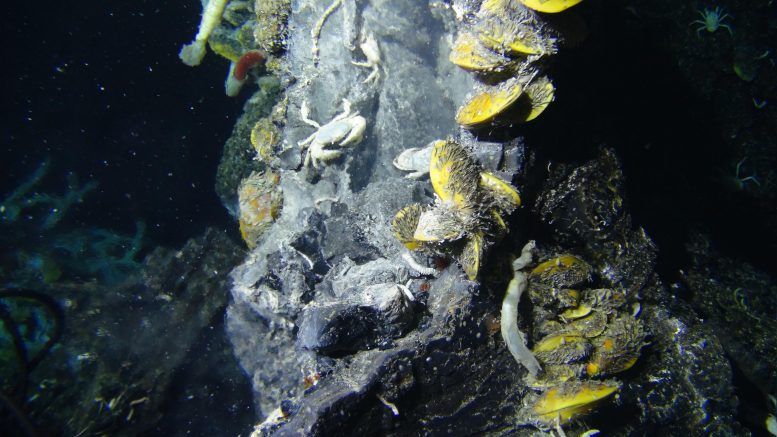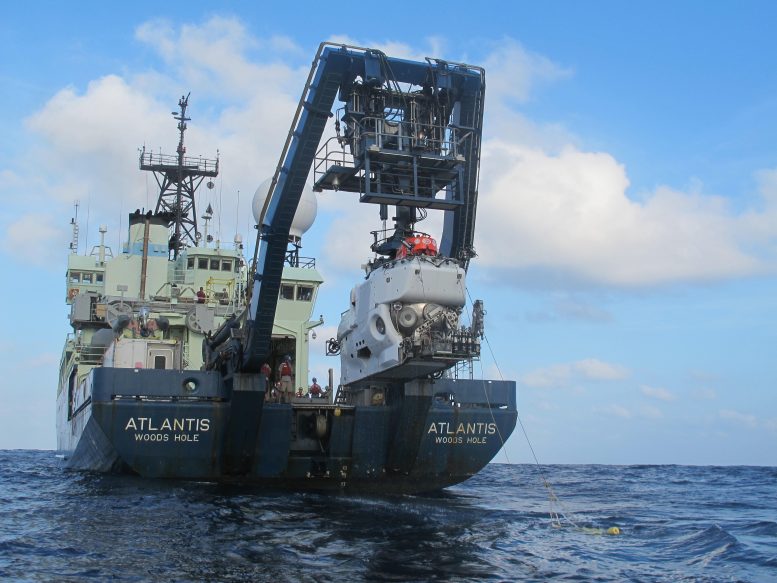
A newly discovered species of bacteria found at the deep-sea hydrothermal vent known as ‘Crab Spa’ offers significant insights into the evolution of bacteria.
Deep-sea hydrothermal vents, akin to hot springs on the ocean’s floor, are a spectacle of nature. Here, seawater seeps into the oceanic crust, warming up and then ascending back to the ocean floor laden with nourishing solutes. Remarkably, these vents host thriving ecosystems, completely devoid of sunlight. In this unique environment, microbes assume the pivotal role of primary producers, harnessing the power of chemosynthesis, similar to how plants on the Earth’s surface utilize photosynthesis to convert light into energy.
Collaborative Research Efforts and New Findings
Researchers at Hokkaido University, in collaboration with colleagues at Woods Hole Oceanographic Institution, have been working on understanding microbial diversity at deep-sea hydrothermal environments on the East Pacific Rise based on microbe cultivation studies. They isolated a novel campylobacterial strain from a warm-water vent known as ‘Crab Spa’ and named it Hydrogenimonas cancrithermarum, after the site. Their findings were published in the journal International Journal of Systematic and Evolutionary Microbiology.

“Chemolithoautotrophic species of the class Campylobacteria (aka Epsilonproteobacteria) are recognized as an ecologically important bacterial group at hydrothermal vents, contributing to primary production,” explains Assistant Professor Sayaka Mino, first author of the paper and research group leader at the Faculty of Fisheries Sciences, Hokkaido University. “On the other hand, some members of this class, e.g., Helicobacter, Arcobacter, and Campylobacter, are also well-known pathogens of humans and animals.”
Unique Features of Hydrogenimonas cancrithermarum
Hydrogenimonas is known as the thermophilic (adapted to hot temperatures) genus that is most closely related to mesophilic and pathogenic genera in the class Campylobacteria. Yet, only two described species have so far been reported in this genus. The present study revealed that the new strain represents the first mesophilic (adapted to moderate temperatures) and sulfur-oxidizing bacterium in the genus, expanding the physiological and metabolic characteristics of the genus.
“The discovery of a mesophilic Hydrogenimonas species was unexpected. The strain likely provides us with the opportunity to investigate their evolutionary transition from a thermophilic to a mesophilic and from an autotrophic (capable of creating organic compounds) to a heterotrophic (consumes autotrophs to obtain organic compounds) lifestyle,” says Mino.
They further conducted a comprehensive comparative study of the genomes of Campylobacteria, and discovered that the genes responsible for the phosphotransacetylase-acetate kinase (Pta-AckA) pathway tend to be conserved between Hydrogenimonas and the mesophilic species that subsequently diverged from Hydrogenimonas, regardless of their metabolism and pathogenicity.
“The Pta-AkaA pathway has been reported in a pathogenic Campylobacter species to play an important role in colonizing hosts. While we don’t yet understand its specific role in the genus Hydrogenimonas, the acquisition of the genes might represent a key event that enabled their diversification from deep-sea vents to other environments,” says Dr. Stefan Sievert, leader of the research group at the Woods Hole Oceanographic Institution.
“Nowadays, studies of microbial diversity largely rely on cultivation-independent metagenomic sequencing approaches which produce massive amounts of data,” concludes Mino, “Yet, it is vital to remember the significance of cultivation, as shown by the isolation of the new strain that differs markedly from other members of the genus Hydrogenimonas.” The researchers will continue their efforts to discover new culturable species and thus contribute to the understanding of the diversity of Campylobacteria.
Reference: “Hydrogenimonas cancrithermarum sp. nov., a hydrogen- and thiosulfate-oxidizing mesophilic chemolithoautotroph isolated from diffuse-flow fluids on the East Pacific Rise, and an emended description of the genus Hydrogenimonas” by Sayaka Mino, So Fukazawa, Jiro Tsuchiya, Jesse C. McNichol, Stefan M. Sievert, Shogo Yamaki, Yasuhiro Ando and Tomoo Sawabe, 3 November 2023, International Journal of Systematic and Evolutionary Microbiology.
DOI: 10.1099/ijsem.0.006132
The study was funded by the Japan Society for the Promotion of Science, the National Science Foundation, and the Woods Hole Oceanographic Institution.